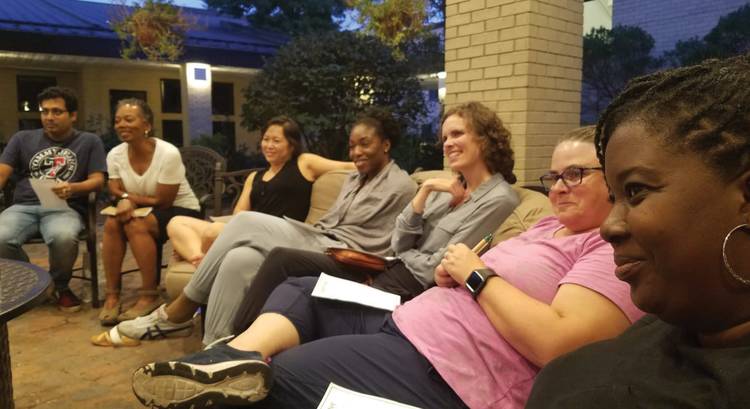We’re learning that one way to incorporate the power of curiosity is to create a culture of wonder: to frequently model and encourage the same kinds of “I wonder” questions that motivate child development and learning researchers.
One of my favorite things about young children is their curiosity. Babies are born curious and, unless that drive is actively squashed, curiosity will be the primary vehicle that leads to the astounding amount of learning that is typical by the time they turn 3.
As someone who creates adult learning experiences, it makes me wonder…
If curiosity is so strongly linked to learning in babies can it also play a powerful role in planned professional development? Clearly curiosity provides powerful internal motivation, as well as context for meaningful learning, in infants and toddlers. The same is true for older children and adults in informal learning; humans at any age are ripe for deep learning when they wonder “why” and “how,” and have the freedom and resources to pursue the exploration for answers.
But how can curiosity be incorporated into formal learning, where the knowledge and skills to be learned aren’t identified by the learner but by the designer of the educational experience?
This is a question that I and my colleagues in the Early Childhood Workforce Innovations department have been exploring during the past year as we develop and pilot the ZERO TO THREE Critical Competencies for Infant-Toddler Educators™ Professional Development Series. The Critical Competencies Professional Development Series is based on the accumulated knowledge of researchers about specific adult interactions and behaviors that have been linked to positive developmental outcomes in young children. In short, the ultimate goal is for infant-toddler educators to do more of those things because, when done consistently over time, children benefit. So, we know where we want educators to end up after their learning journey through the series. And we’re exploring how we get them there and what role, if any, curiosity has in skill-based professional training.
We’re learning that one way to incorporate the power of curiosity is to create a culture of wonder: to frequently model and encourage the same kinds of “I wonder” questions that motivate child development and learning researchers. “I wonder…” invites others into exploration and discovery. Through the use of video clips, case studies, and personal experiences, and powerful questions, our trainers facilitate wondering and exploring possible answers. Knowledge from the world of science is offered as pieces to the puzzle. And yet wondering rather than certainty still guides the learning: “How does this information from research help explain what’s happening in this situation, with this child?”
We also have incorporated many opportunities for participants in the training to reflect: to individually consider and respond to prompts that are intended to elicit more “wonderings” about children that they can explore on their own. What we’ve found is that giving educators practice in wondering during the training sessions encourages them to be more mindful and attentive to children in their daily work and to be more willing to question their assumptions and reflect on possible explanations.
In the spirit of commitment to curiosity-based learning, however, we have more questions that we are wondering about! Collaborative action research is especially intriguing to us as an approach that builds on educators’ curiosity, particularly about one’s own professional practice, and takes it to a deeper level of continuous, purposeful learning. Collaborative action research* is a decades-old approach to professional development with roots in K-12 education. Action research is a systematic process of improving one’s own practice through iterative cycles of inquiry, introduction of a change in practice, and analysis of the outcomes. Inviting the feedback of colleagues in a supportive learning community brings in the collaboration piece and enriches knowledge-building.
As our team moves into the final phase of refining the Critical Competencies Professional Development Series, and then on to new curriculum projects, we feel that we have some of the basics of the collaborative action research approach in place. And we still have questions we wonder about and will explore further.
- How can we encourage and support teams of infant-toddler teachers and administrators to build a culture and practice of systematic wondering about professional practice in their programs?
- How can we strengthen and effectively replicate our efforts to create an environment during our Training-of-Trainer series in which trainers feel comfortable collaboratively questioning and improving their own professional practice?
- How can we, the ECWI team, extend our sense of wonder about what works in the professional development experiences we design to be more systematic and intentional in building our knowledge and skill in designing and delivering meaningful and effective learning opportunities for the early childhood workforce?
I hope this glimpse inside of our wonder-filled heads has piqued your interest and perhaps even prompted a question or two about your own professional practice. What are you curious about?
*To learn more about this approach, visit the Center for Collaborative Action Research website.




